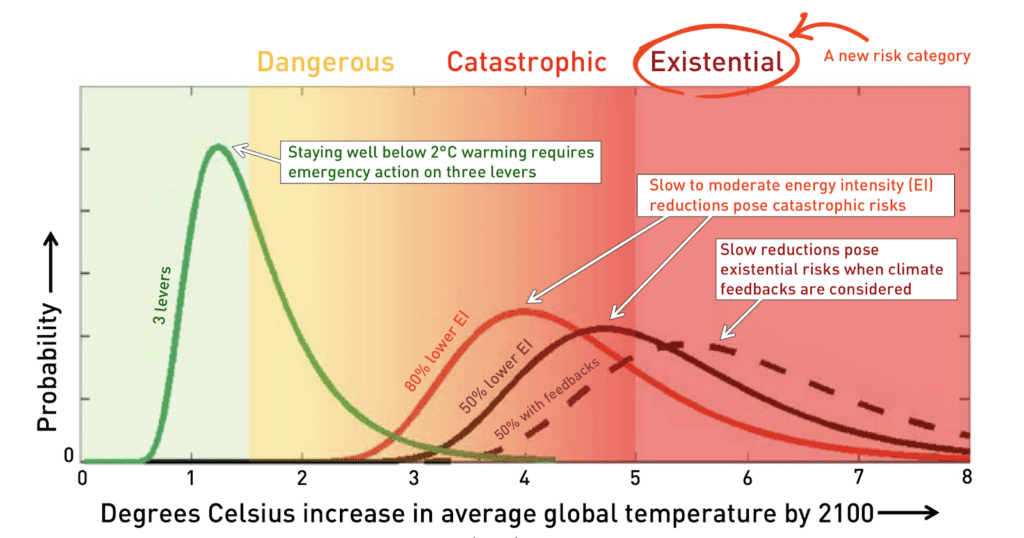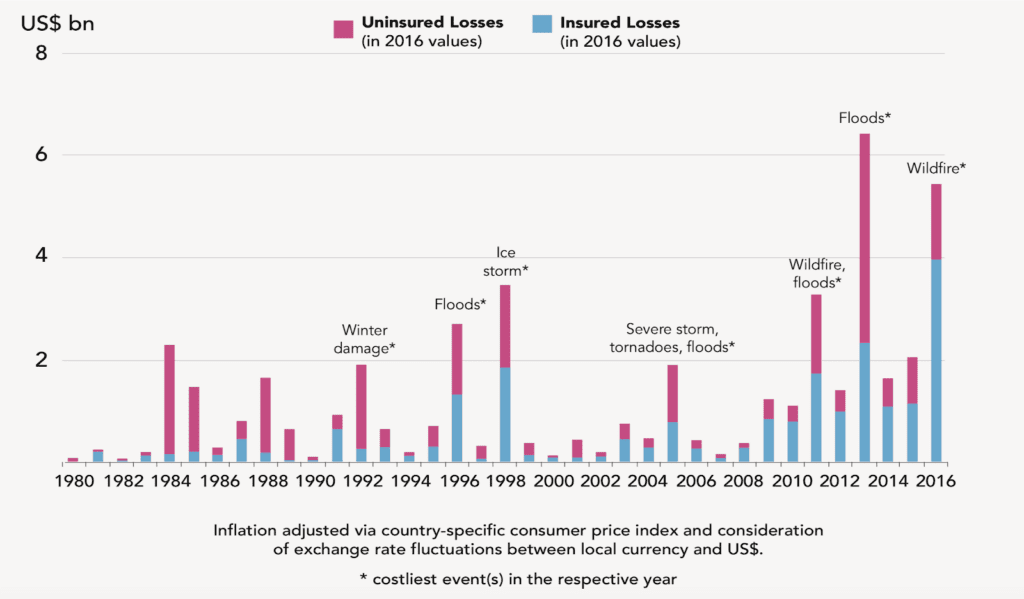Help Pass
Climate Emergency Declarations
In Your Community
We Are In A Climate Emergency
A climate emergency declaration is an important step toward addressing the most pressing issue of our time.
An emergency declaration helps frame the urgency of the issue in the public’s eye, and can help build the case for needed action.
Why is 1.5° important?
Severe impacts, such as the flooding experienced by communities in Ontario this past summer, the extreme fires in Australia, the increased range of pests such as deer ticks and lyme disease, and the stability of local food systems, among others, are already being observed with a 0.87°C increase.
Global warming is likely to reach and then surpass 1.5°C between 2030 and 2052 if it continues to increase at the current rate.

The three-lever strategy to limit warming below the dangerous level noted in the diagram comprises the reduction in CO2 to achieve zero net emissions, targeting and mitigating super pollutants, and extracting and sequestering CO2 to decrease its presence in the atmospheric.
All of these levers are available for use by municipalities.
How will climate change impact our area?
According to the Simcoe Muskoka Health Unit mean annual temperatures are expected to increase in our area by approximately 3.5°C by 2050. This increase reflects a climate similar to that of Kentucky. By 2080, with a projected increase of 5.7°C, our climate will have warmed such that it reflects that currently experienced in Mississippi.
Heat wave days are expected to increase to 100 per year by 2080, up from roughly 10 in 1990. This will place an increased demand on utilities, impact community health, local agriculture, and recreation, to name a few areas.
Winter months will have a dramatic increase in precipitation, with a corollary demand for road maintenance and knock-on impacts for water due to runoff. Increased winter precipitation will heighten the risk of spring flooding.
Why net zero by 2050?
Net zero carbon emissions by 2050 is the target set by the IPCC for keeping global warming under 1.5°C.
What does “net zero” mean?
Net zero carbon emissions means that emissions are offset or removed from the environment, such that no new emissions are added.
Offsets and carbon removal may be achieved through increased efficiencies, such as with the use of better building standards or communities that incorporate more active and mass transit, reducing single vehicle use, the use of new technology, the use of green infrastructure, among numerous other examples.
What are the benefits of taking action?
Mitigating climate change reduces exposure to costs, as noted above, including servicing roads and sidewalks as increased winter precipitation requires more plowing and salting, the knock-on effects of that salting on Lake Simcoe and other local waterways, road repair due to increased heaving, to name a few.
Increased exposure to risk also means it will be more difficult for Canadians to insure their belongings, and will require governments to step in with financial support in the case of loss. This, in turn, places pressure on government revenue and, ultimately, tax rates.
According to the Insurance Bureau of Canada (IBC) approximately 20% of Canadian homes are in locations with a high risk of flooding, with approximately 10% at a very high risk of flooding. The increase in severe weather events that will come with climate change exposes these homes, the families that live in them, and the governments representing them, to greater physical and financial risk.
Natural disaster related loss also gives rise to increased lawsuits.
See the chart below, from the Intact Centre for Climate Adaptation’s Blair Feltmate, for an indication of the increasing costs of natural disasters in Canada.

Further, there are numerous co-benefits that come with action.
Building complete communities reduces the amount of time people have to spend in cars, whether on their way to and from work, shopping for groceries, going out for a meal or event, or transporting their kids to school. Complete communities can provide transit for more efficiently, with lower per-trip cost to the municipality, and consolidate infrastructure while reducing cars on roads and associated costs.
Additionally, the active transit opportunities that come with complete communities foster a healthy population, thereby lowering costs associated with treating a number of chronic ailments.
Finally, complete communities can be seen as innovation engines, providing opportunities for new connections and the formation of relationships by happenstance that would not otherwise occur.
Acting now to make our communities leaders in addressing climate change can place them at the forefront of competing jurisdictions in attracting the jobs of the future.
Physics requires us to act – change is coming whether we like it or not. Getting in front of this can be a catalyst that propels us into a strong leadership position in the economy of the future.
Which Municipalities in Simcoe County Have Declared a Climate Emergency?
It's Time to Declare a Climate Emergency
Community supported, advocacy for a safe and secure future.
Governments have failed to act to protect our communities and the futures of our children and grandchildren, and they continue to treat our environment as if it’s incidental to life, rather than a foundation for it.
We need strong community organizations to fight for our future, now more than ever.
Please consider donating to support our work. It’s people like you who make us possible.
Subscribe to Our Newsletter
We send out a once-monthly newsletter full of information on what’s happening in Simcoe County and beyond, including information on how you can take action to protect the health of your community.



